cold noodles!!!
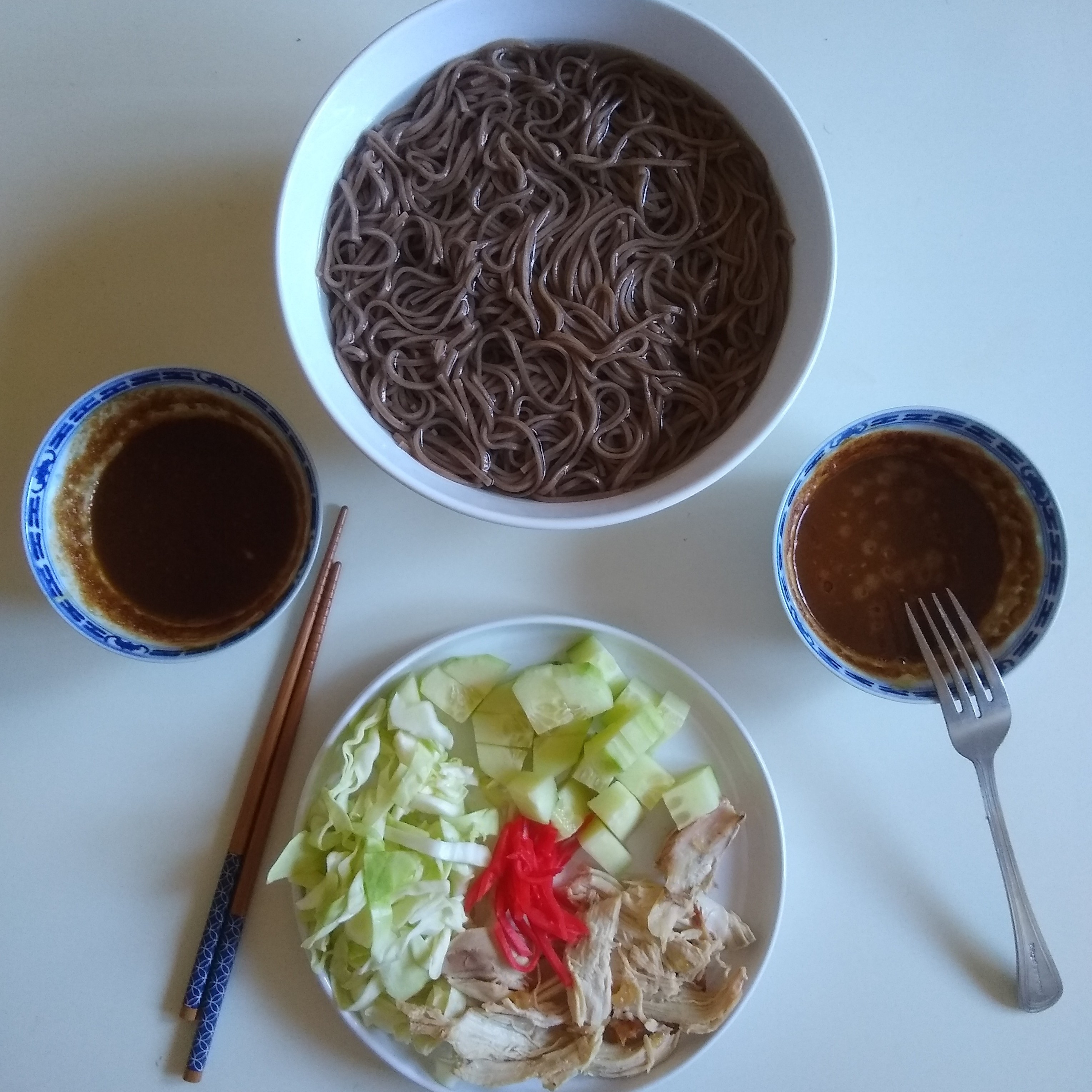
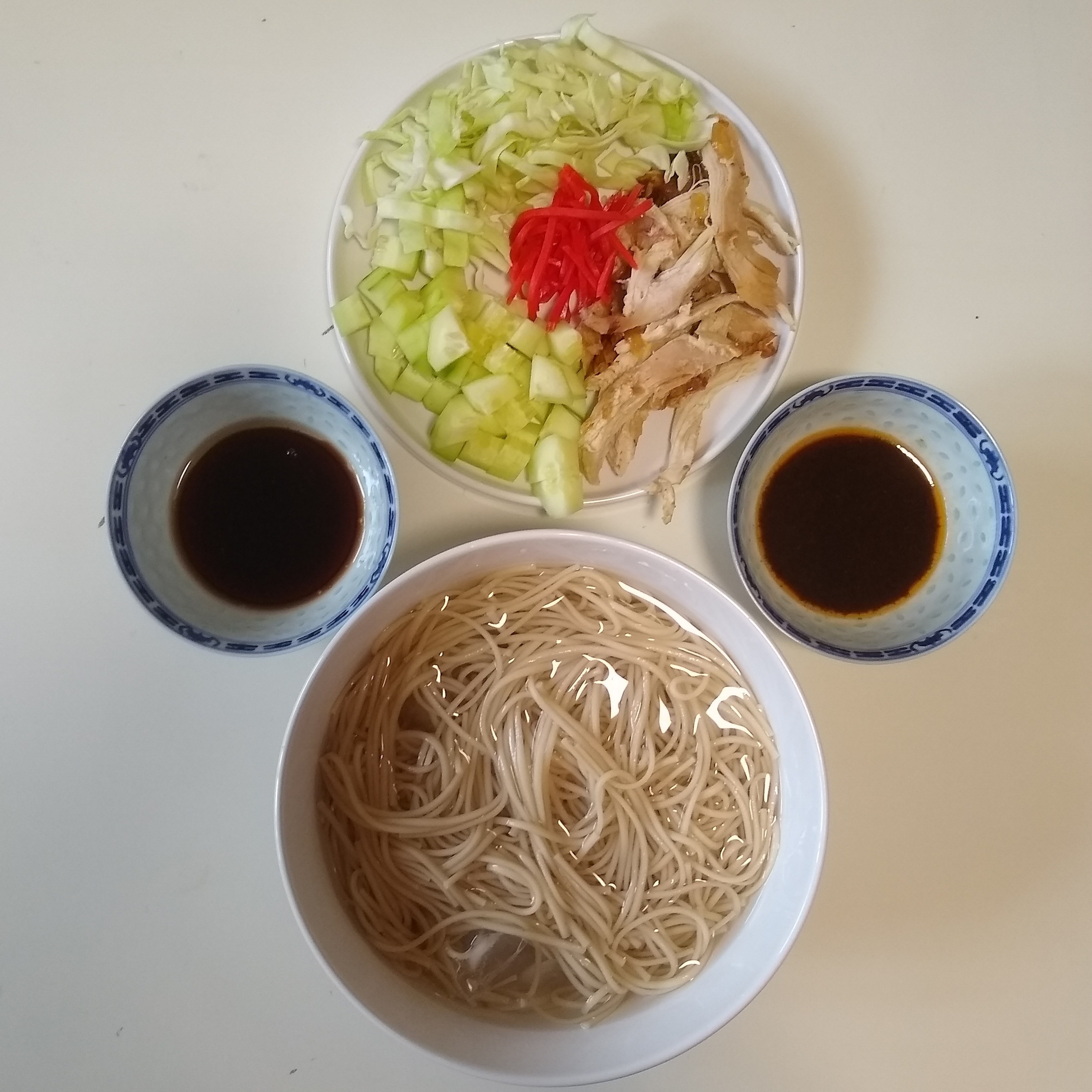
summer is cold noodle season.
i first tried making them myself a few years ago and they've quickly become one of my favorite parts of summer. here are the ways i usually make cold noodles — mostly influenced by Japanese cuisine, and some detours into Chinese and Korean dishes — with exposition and links to websites that have given me ideas.
e
the noodles
i use somen, soba, thin udon, or ramen for cold noodles, because that's what my grocery store stocks and they keep for a long time in dried form. there are other options out there, but i haven't tried them.
the basic technique i use for the noodle component of cold noodles follows:
- put a lot of water in a pot and bring it to a boil.
- add the noodles.
- monitor them closely — thin noodles don't take long to cook. pull one out and try it. they should still be kinda chewy, but not unpleasantly so.
- drain the noodles (or pull them out of the pot if you have a spider tool) and rinse them under cold water.
- you might want to reserve the cooking water and use it for something else, especially if you're cooking soba. so watch out.
- rinse the noodles in cold water and/or plop the noodles into a big bowl of ice water and let them sit for at least a few minutes.
Elizabeth Andoh goes into more detail on this process for somen, soba, and other noodles. her website Taste of Culture is a treasure if you like no-nonsense, downloadable recipe pages, and i've done a lot of cribbing from her website over the years.
note that this is the worst part of making cold noodles because it's the hottest part.
toppings and accompaniments
unless you like to raw dog your noodles, you'll probably want some vegetables and protein in your meal. my most used toppings are:
- fresh grated ginger or pickled ginger.
- sliced green onion.
- hard-boiled eggs (i don't like soft-boiled) or tea eggs.
- cold chicken.
- peanuts or sesame seeds.
- cabbage: cabbage is non-negotiable for me. i slice it into small chunks or ribbons and massage it with salt (and sometimes a splash of rice vinegar). the salt seasons and preserves it. i use purple cabbage sometimes. use whatever greens you like eating raw.
- miscellaneous veggies: sweet or hot peppers, cucumber, daikon, carrot, celery, mushrooms, seaweeds...
- fresh fruits: these really round out a fancy-looking meal and give you something different between bites. melon and mango are my go-to's.
- pickles: i make batches of quick fridge pickles in the summers, putting the veggie in a jar with salt, vinegar, and often a bit of sugar or seasoning. kimchi is good with cold noodles, but dill pickles would probably be kinda weird.
- whatever random cold sides are already in the fridge.
if you're planning a fancy cold noodle meal or you're having trouble narrowing down your options, try the "five colors" (goshoku) rule from Japanese cuisine: include ingredients that are green, red, yellow, black/dark, and white. variety and balance are good; there's also nothing wrong with loading yourself up with cabbage and ramen if it's what you've got.
i like to prep big batches of these individual ingredients before heat waves or at night so that i have to do very little in the kitchen right before eating. if you get sick of noodles, congrats, you have a bunch of ingredients ready to throw into other meals.
sauces
if you'd like an exact sauce recipe, check any of the websites i mention on this page. i don't typically use a noodle sauce recipe unless i'm trying a new one, and i do something different every time. at its simplest, i use soy sauce with a teeny tiny bit of sesame oil. if i feel like prepping fresh aromatics (ginger, garlic) i'll use some. if i'm in the mood, i'll mix up a more elaborate sauce using sesame paste or peanut butter as a base. i've also become fond of cold noodle sauces with gochujang (Korean fermented red chili paste), such as bibim-guksu; Maangchi and Elle of Cookerru have two slightly different takes on the dish.
e
as far as i've seen, cold noodles are eaten three ways: dipped into sauce a bite at a time, served with sauce poured over or mixed to coat them, or swimming in a cold broth. i don't really make cold soups, so i'll be focusing on the dipping and pour-over methods here. Andoh has a nice choose-your-own-adventure-esque page that discusses Japanese cold noodle dishes of these types. you should check it out.
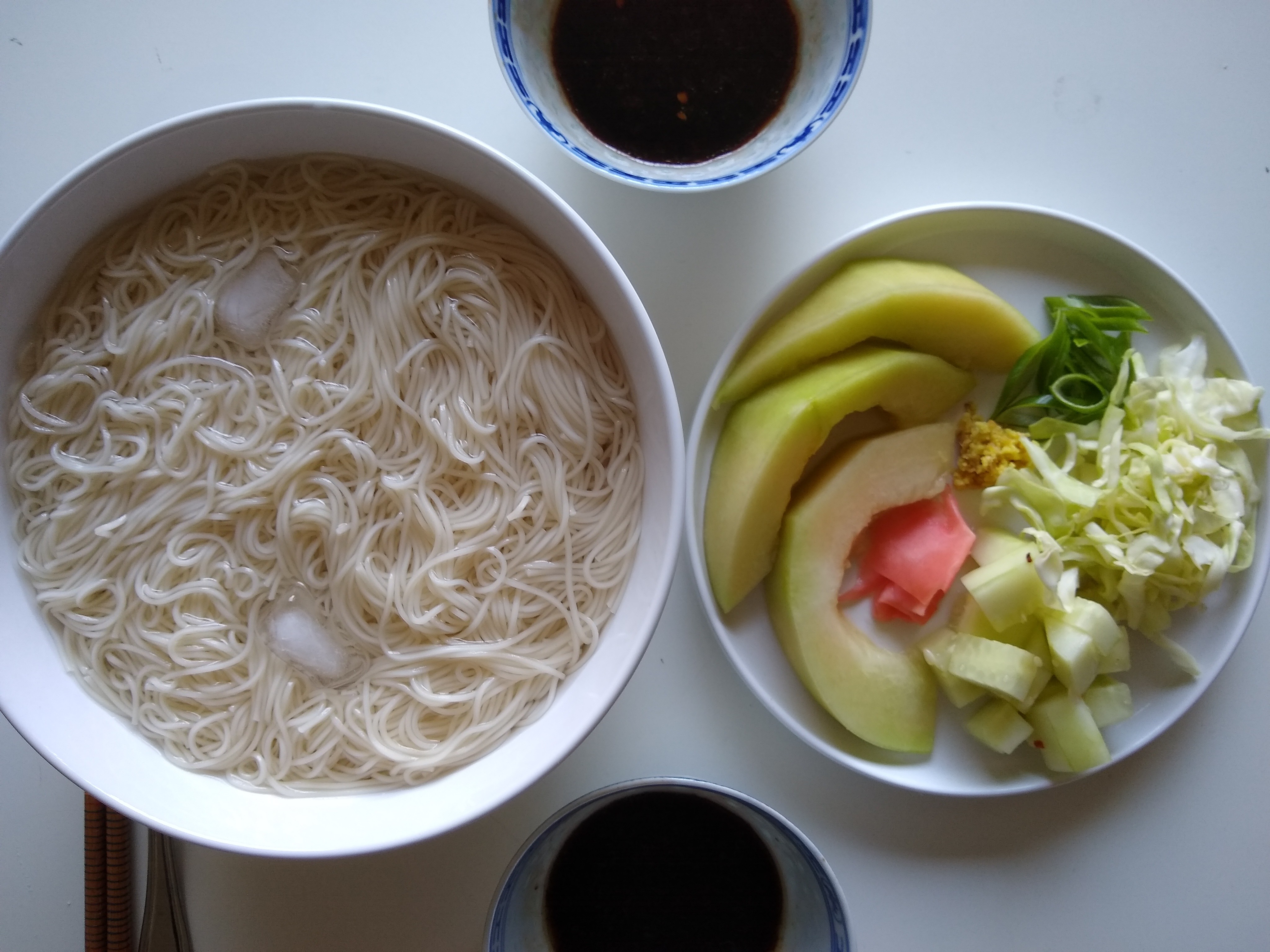
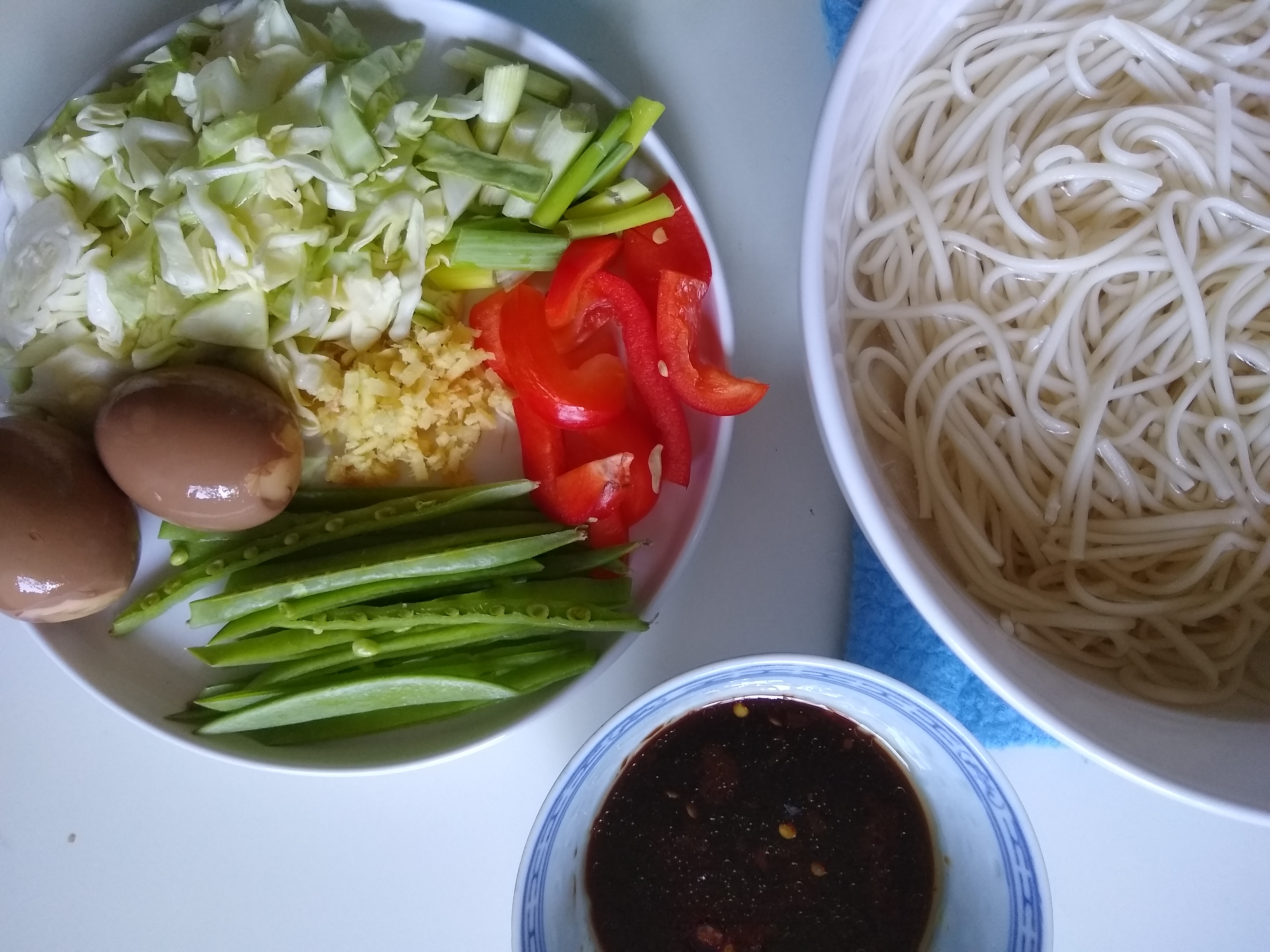
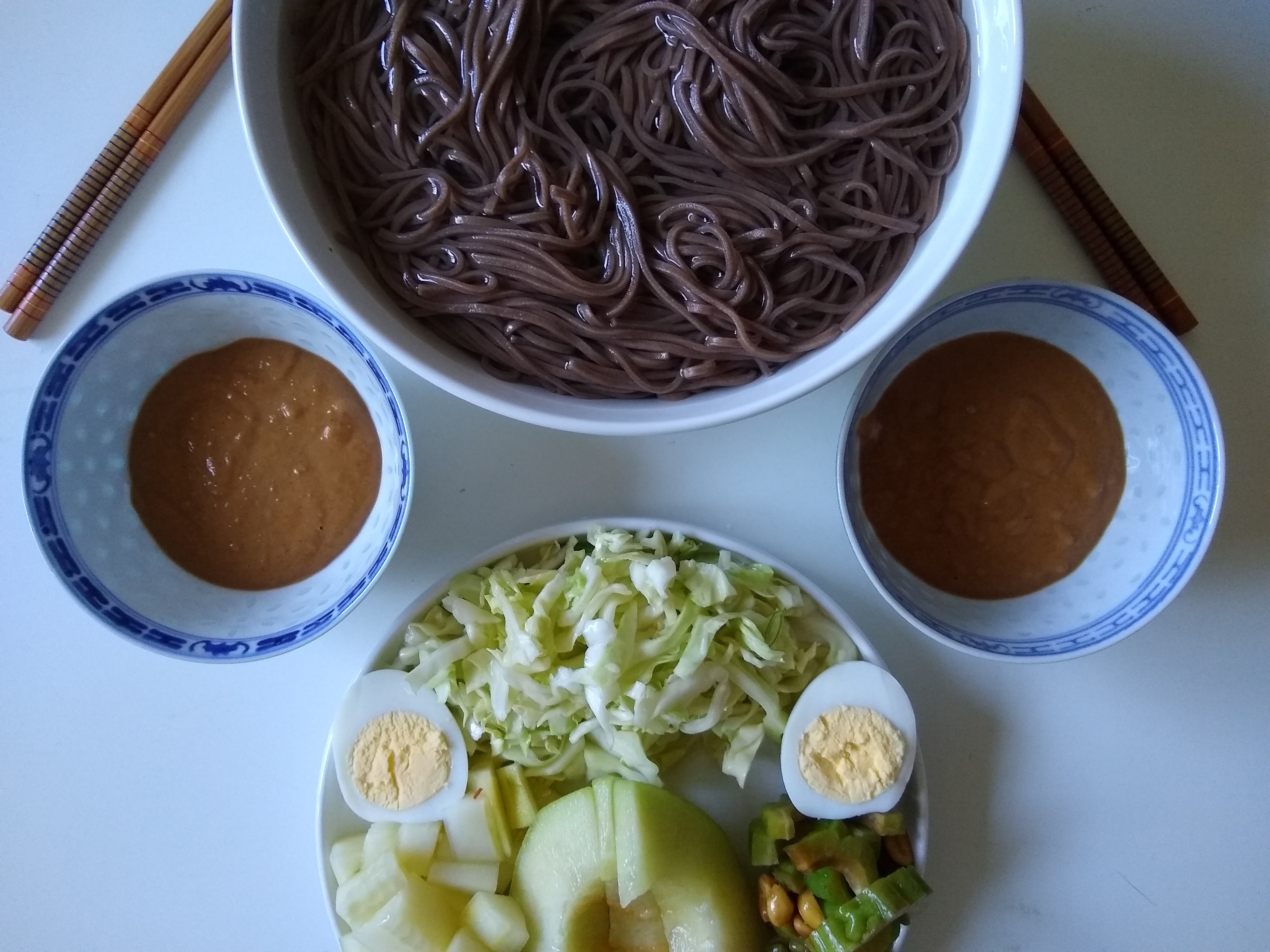
cold noodles with dipping sauce
this serving method works well if you want to have a meal with communal dishes or if you want your noodles to stay cold cold cold, no matter how long it takes you to eat them. i like the method that Andoh describes as "noodles on-the-rocks":
- after cooking your noodles, leave them in "time out" inside their bowl of ice water.
- put all your toppings and accompaniments into serving dishes.
- give everyone their own personal bowl to hold dipping sauce.
- let everyone grab noodles and toppings from the shared serving dishes.
in addition to the Andoh link above, Namiko Hirasawa Chen of Just One Cookbook shares her take on somen "on-the-rocks", as well as one way to serve strained soba, if you would prefer to deprive the noodles of their ice bath.
when serving guests cold noodles with dipping sauce, i've been known to pull out everything that i deem even tangentially appropriate (soy sauce, ponzu, chili-garlic paste, sweet chili sauce, sesame oil, chili oil, vinegars...), make sauce for myself first so they have an example, and then let them make their own personal sauce in their dipping bowl. people have a lot of fun with it.
what if you have dipping sauce left in your bowl afterwards? top your bowl up with soba cooking liquid or a broth/stock. it's soup!
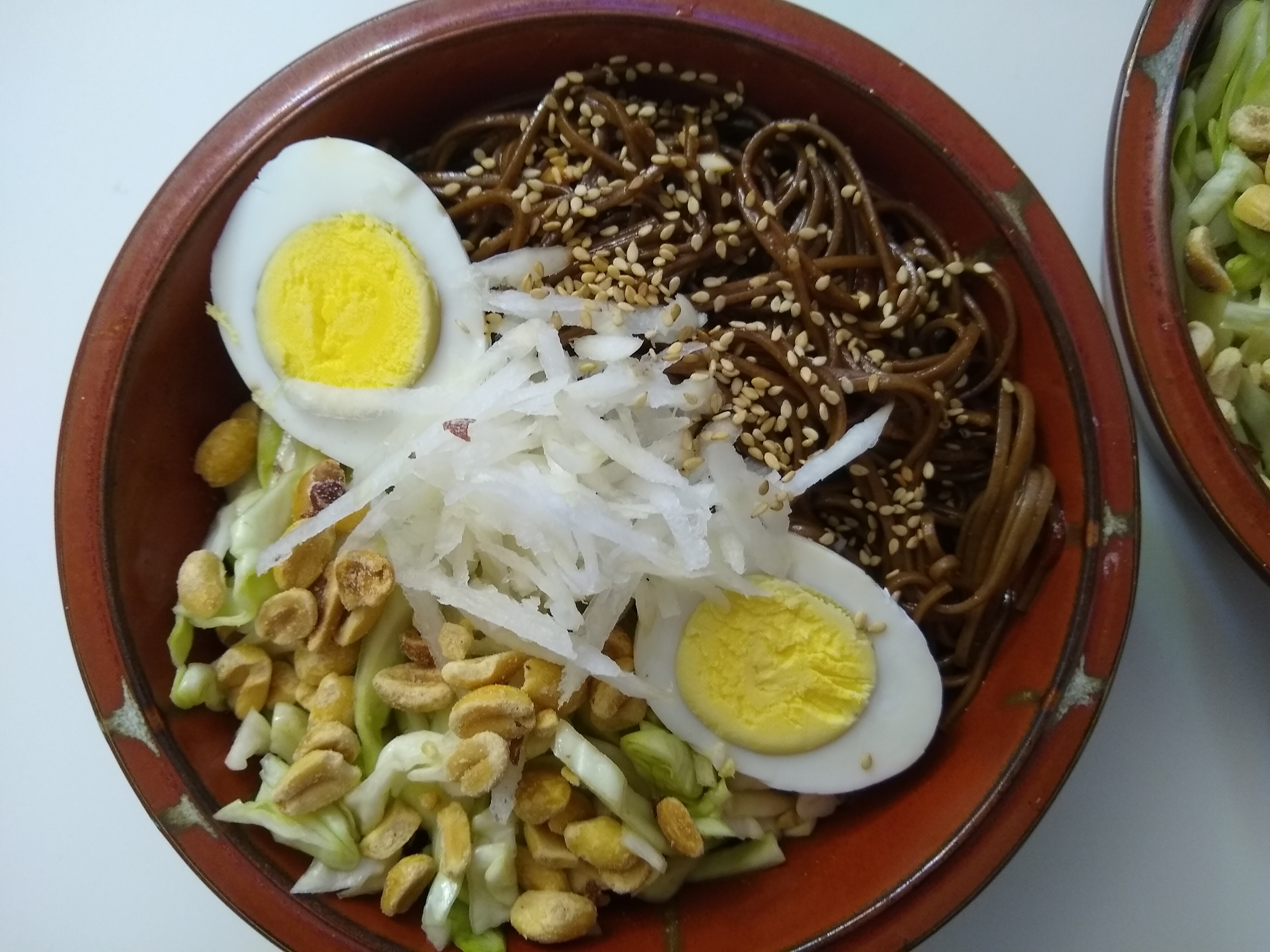
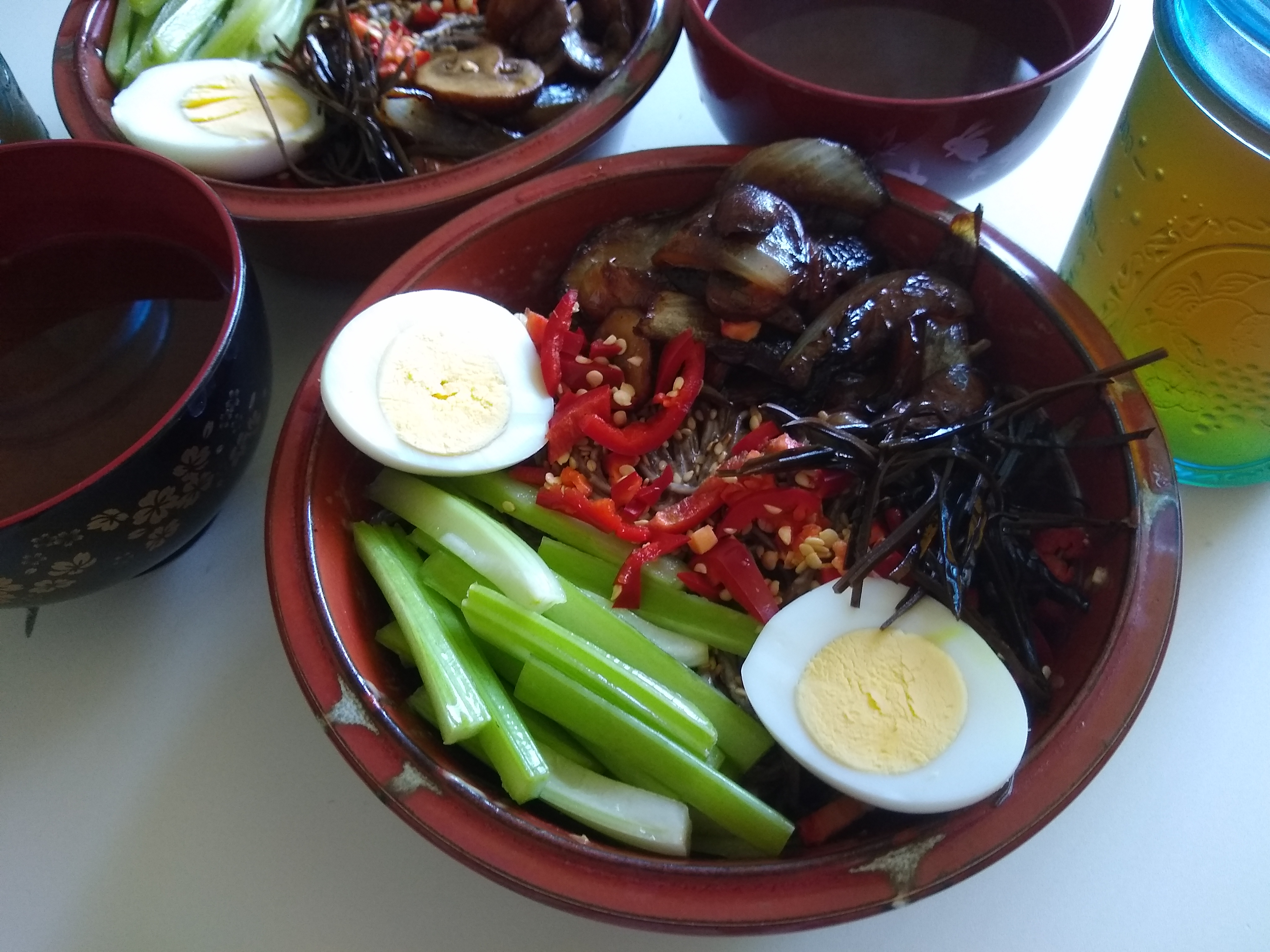
cold noodles with sauce poured over them
this serving method works well if you aren't in a situation where sharing communal food dishes is optimal or if you want to use a sauce that doesn't play well with dipping (e.g. it's thick or it's just a flavored oil).
- strain the noodles from their cold bath.
- decide whether you want to pour your sauce over the noodles in their bowls or to mix the noodles with the sauce to ensure even coverage. do that.
- once the noodles are served and sauced, pile on toppings and accompaniments.
- stir everything together or leave in neat little piles, as you please.
Maggie Zhu of Omnivore's Cookbook has a nice version of Chinese Chicken Noodle Salad; Andoh and Nami both point out in their versions of cold noodle salad that the Japanese name for the dish translates to "chilled Chinese food". i tend to assemble something pretty similar to these, and i'll sauce the noodles with either a basic soy sauce-oil concoction, or a nut paste mix, or a gochujang mix, as mentioned above.
e
things i want to try
- i want to branch out into cold noodle dishes outside of Japan, China, and Korea. i remember eating this really good rice noodle salad at the Vietnamese restaurant near my hometown in California. i should try making that.
- come to think of it, i've never actually cooked rice noodles on my own. i need to better myself.
- sweet potato noodles?? they sound really good.
- Sichuan peppercorn sauces. i recently bought a big bag of them and i'm experimenting.
- Korean blended noodle sauces that incorporate fruits. these recipes for bibim-naengmyeon, jaengban-guksu, and spicy Korean temple noodles are giving me ideas.
- so many of these pretty salads have fresh tomatoes as a topping, but for some reason i've never tried them on cold noodles!
- while writing this page i got the idea to make a collard greens-focused noodle spread. i'm open to brainstorming.
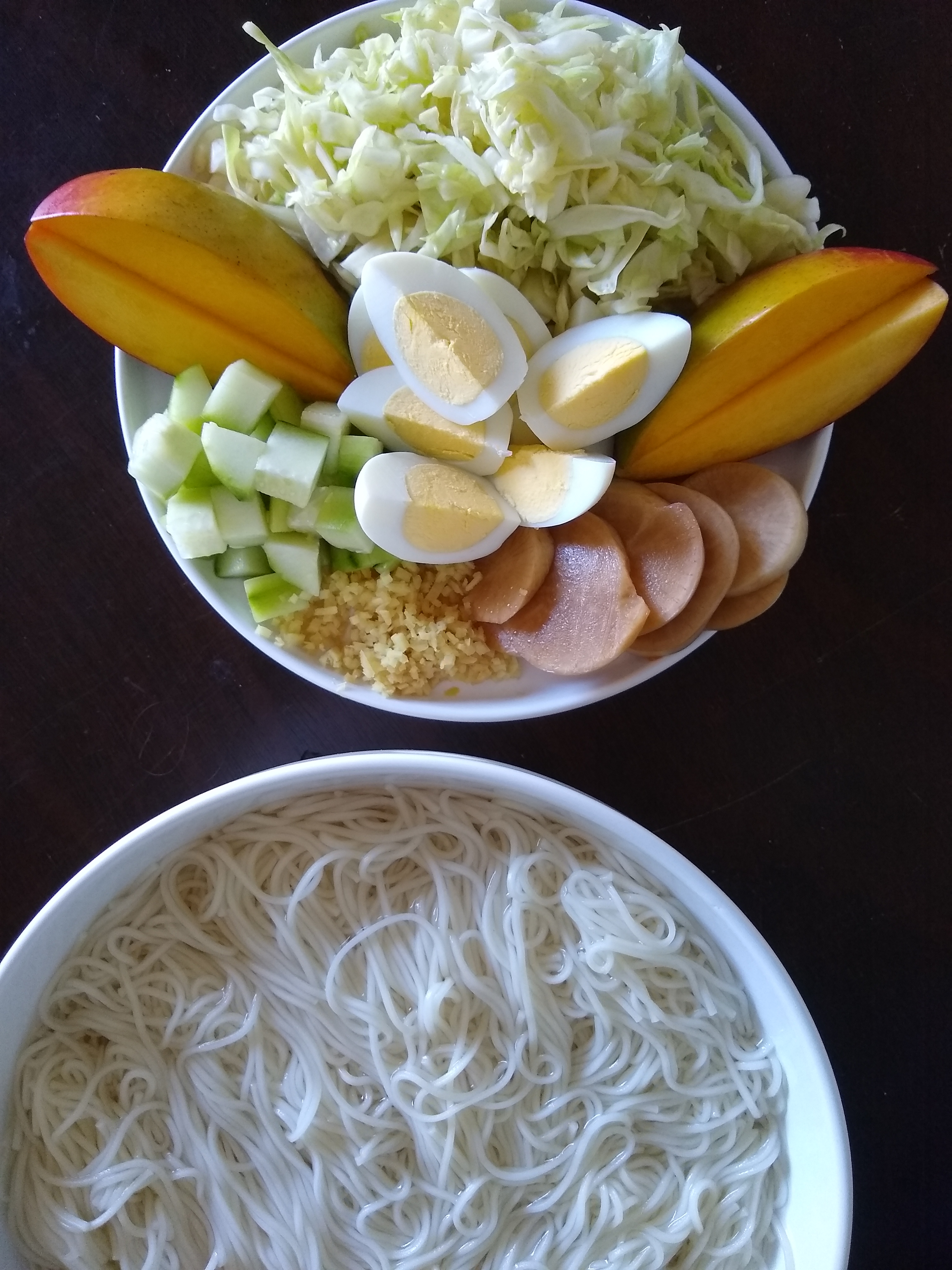 |
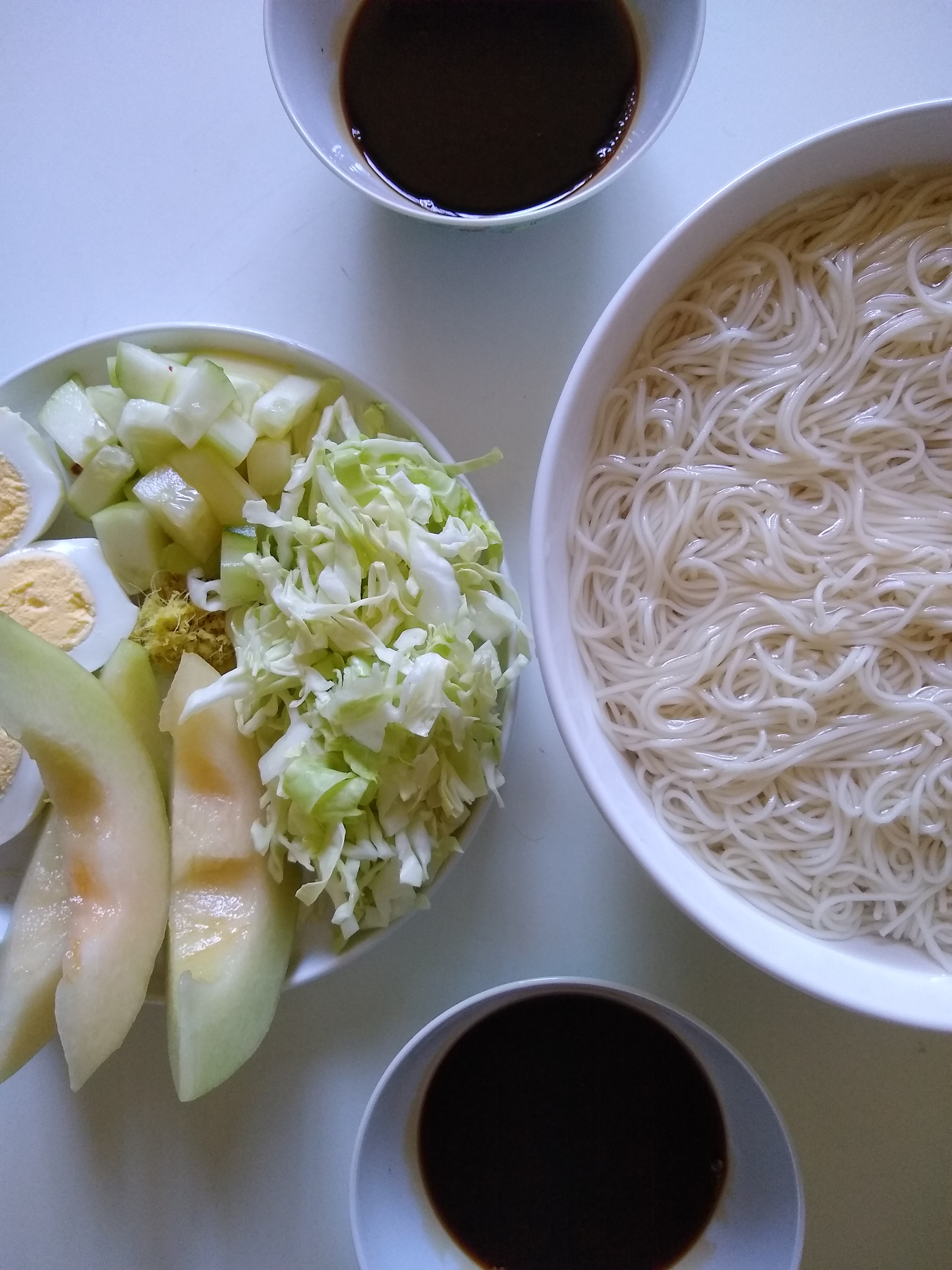 |
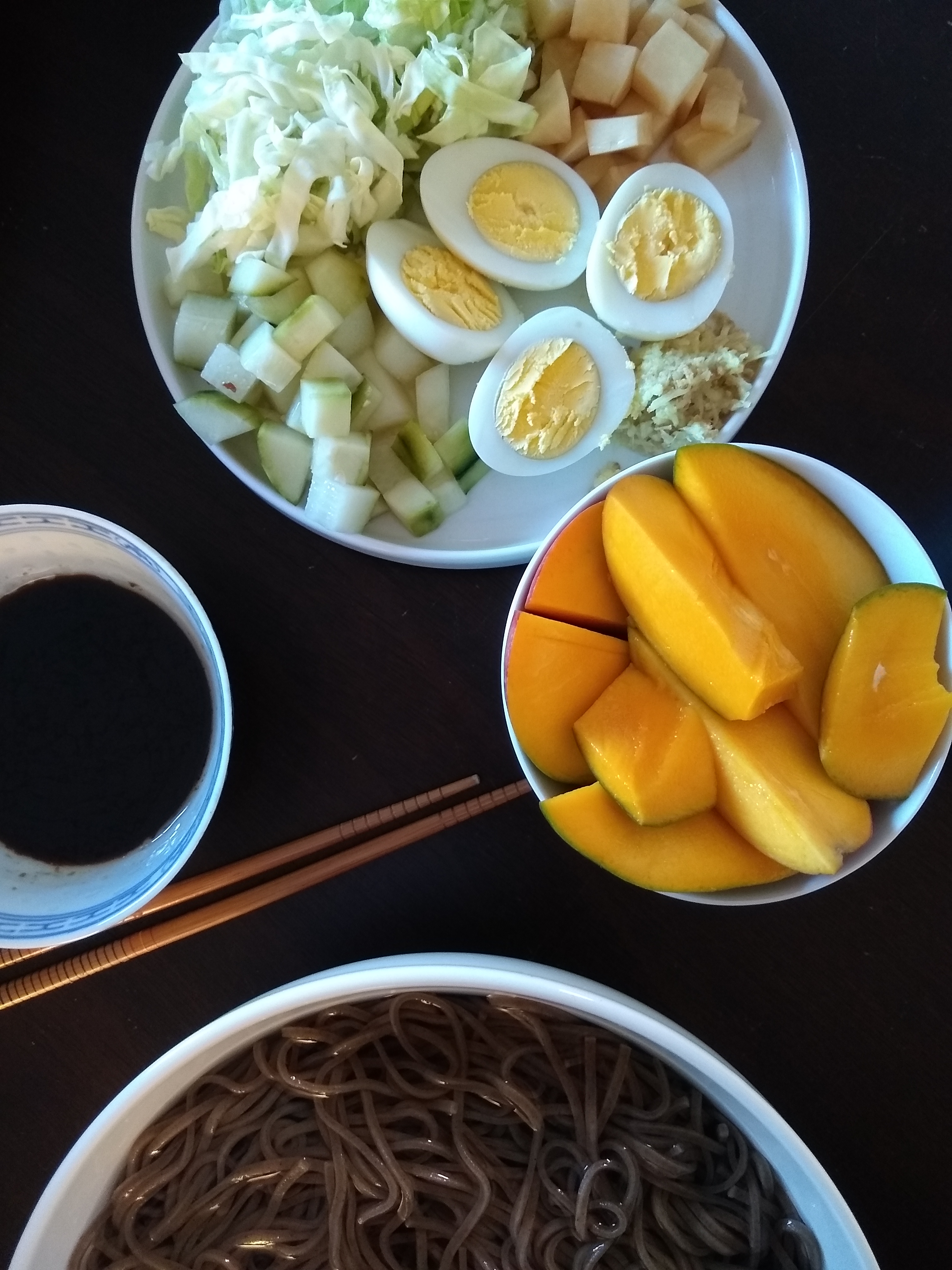 |
ahh..... cold noodles!